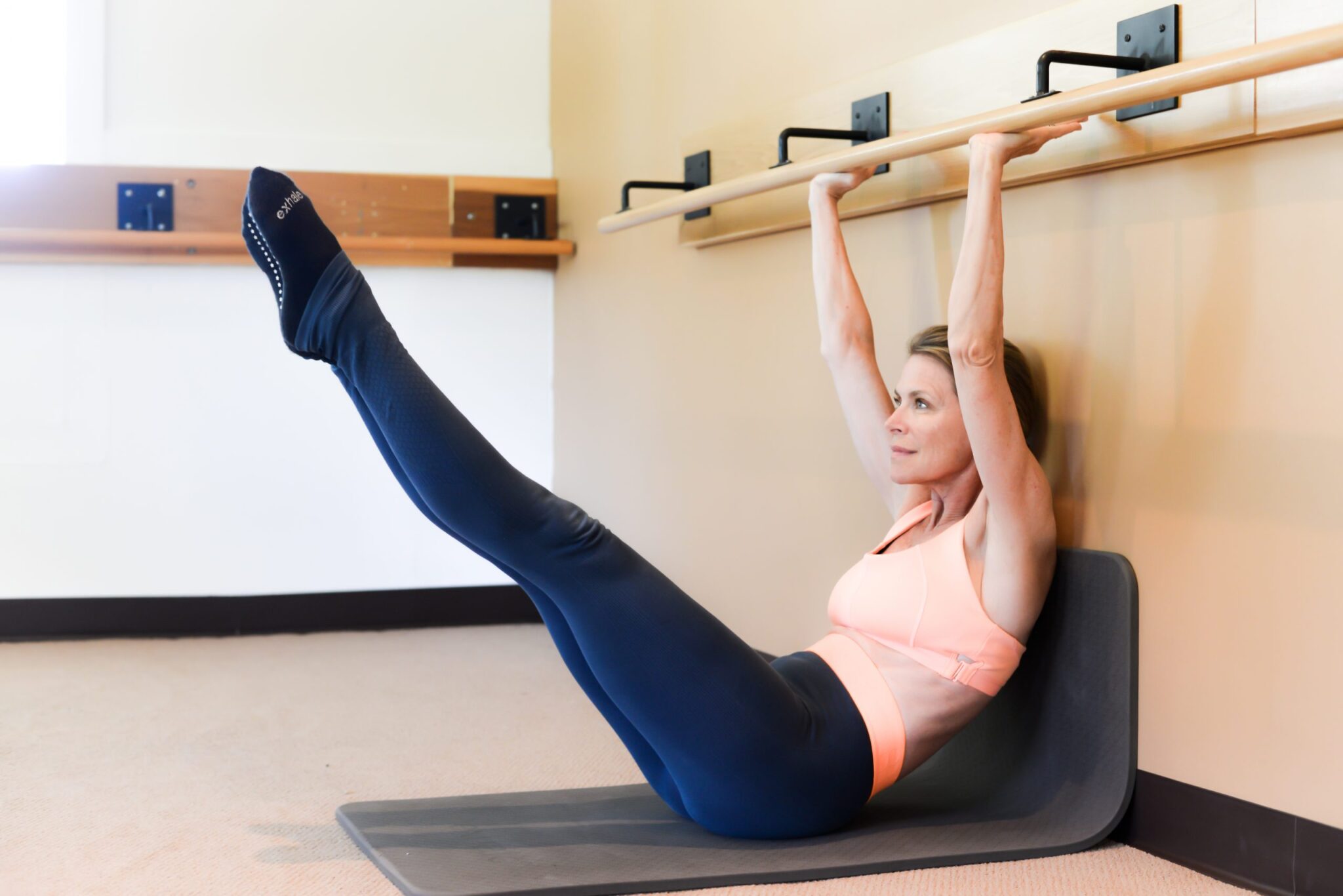BECOME A MEMBER
TODAY + GET YOUR
FIRST MONTH FOR ONLY $50!
VALID AT ALL LOCATIONS EXCEPT ATLANTIC CITY AND BERMUDA.

Round Back is a classic barre exercise: it has roots with Lotte Berk, the founder of the barre technique back in the 1960’s. It’s also a functional exercise position for gymnastic and springboard diver athletes. A staple in core conditioning exercises in every barre class, Round Back is the second exercise position in your core conditioning trifecta: Flat Back, then Round Back, followed by the Curl.
Flat Back and Round Back are two of the most misunderstood barre exercises – and they’re also some of the most effective. Both exercises complement each other to brace and stabilize the core, but with Round Back, there is an added challenge: spinal flexibility. As you round your back against the wall, the posterior chain of back muscles begins to lengthen, which increases the benefits and results of the combined positions.
Coming from the foundation of challenging the strength of the core with the weight of the legs,
Round Back is the quintessential blend of core strength and flexibility. You press your palms up under the barre while simultaneously pulling your belly button in towards your spine. This activates your Transversus Abdominis (TA) – the hard-to-reach muscle that fires up your core. It’s effective because you’re contracting, compressing, and “pulling in” – so you’re sustaining that rock solid focus in your core, while the legs move in various combinations around the brace.
The weight of your legs and the duration of the progression is what gives you results – so keep those abdominals pulled in the entire time! The stronger you get, the easier those leg movements around the brace of your core become. The more you practice, the longer you’ll be able to sustain every move and build the challenge in your abdominals.
Since this exercise challenges your core strength and spinal flexibility, it’s easy to slip up – especially if you’re a competitive barre star who might have issues with overall flexibility and a lack of patience when you’re faced with a challenging moment in class. So don’t give up!
Here’s why: your spinal flexibility and core conditioning hold the key to improving your longevity, preventing injury, and getting the results you want.
Next week in this series: we’ll break down the infamous curl position, the third in a barre class’s core trifecta.